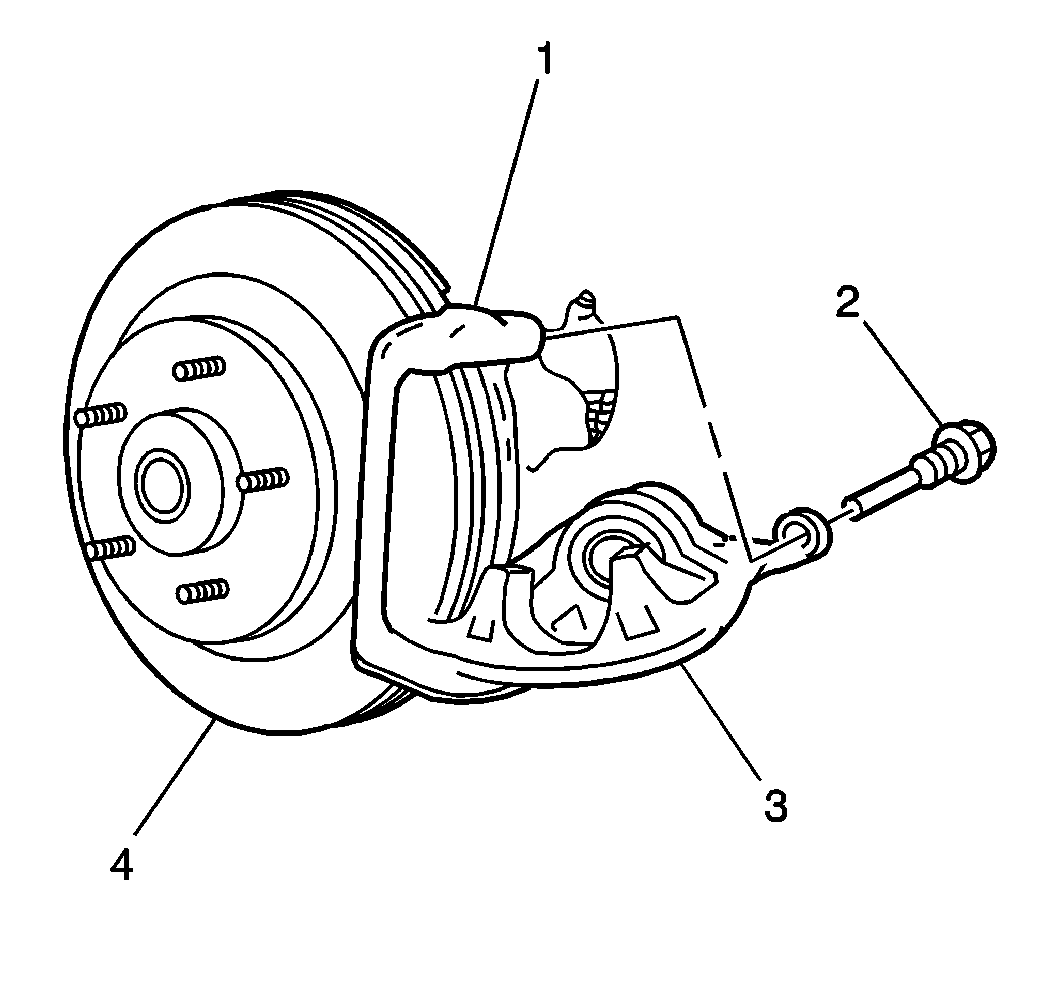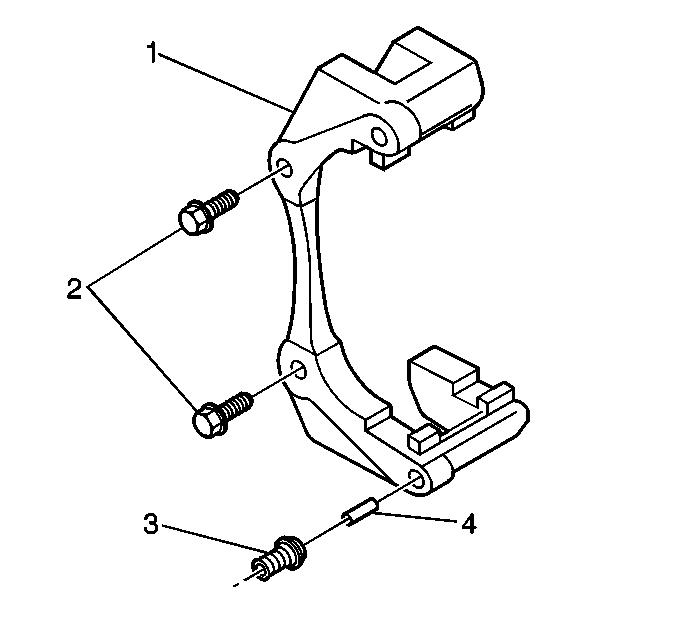Removal Procedure
Caution: Refer to Brake Dust Caution in the Preface section.
- Inspect the fluid level in the brake master cylinder reservoir.
- If the brake fluid level is midway between the maximum-full point and the minimum allowable level, then no brake fluid needs to be removed from the reservoir before proceeding. If the brake fluid level is higher than midway between the maximum-full point and the minimum allowable level, then remove brake fluid to the midway point before proceeding.
- Raise and support the vehicle. Refer to Lifting and Jacking the Vehicle in General Information.
- Remove the tire and wheel. Refer to Tire and Wheel Removal and Installation .
- Remove the brake caliper (3). Refer to Rear Brake Caliper Replacement .
- Remove the brake pads from the brake caliper bracket.
- Remove the brake pad retainers from the brake caliper bracket (1).
- Remove the brake caliper bracket bolts (2).
- Remove the brake caliper bracket (1).
- Remove the brake caliper bolt boots (3) from the brake caliper bracket (1).
- Remove the brake caliper bolt bushings (4) from the brake caliper bracket (1).
- Inspect and replace the brake caliper bracket if cracks or deformation damage exists.
- Use a wire brush in order to clean away any rust and debris from the brake caliper bracket where the brake pads contact the brake caliper bracket.

Notice: Support the brake caliper with heavy mechanic wire, or equivalent, whenever it is separated from its mount and the hydraulic flexible brake hose is still connected. Failure to support the caliper in this manner will cause the flexible brake hose to bear the weight of the caliper, which may cause damage to the brake hose and in turn may cause a brake fluid leak.

Installation Procedure
- Install the brake caliper bracket (1).
- Install the caliper bracket bolts.
- Install the brake pad retainers to the brake caliper bracket.
- Apply a thin coat of High temp Lubricant GM P/N 18010909( Canadian P/N 10953487) or equivalent to the brake pad retainers where the brake pads contact the brake pad retainers.
- Lubricate the brake caliper bolt bushings (4) with GM P/N 18010909 ( Canadian P/N 10953487) or equivalent.
- Install the brake caliper bolt bushings (4) to the brake caliper bracket.
- Lubricate the brake caliper bolt boots (3) with GM P/N 18010909 (Candian P/N 10953487) or equivalent.
- Install the brake caliper bolt boots to the brake caliper bracket.
- Install the brake caliper. Refer to Rear Brake Caliper Replacement .
- Install the tire and wheel. Refer to Tire and Wheel Removal and Installation .
- Lower the vehicle.

Notice: Use the correct fastener in the correct location. Replacement fasteners must be the correct part number for that application. Fasteners requiring replacement or fasteners requiring the use of thread locking compound or sealant are identified in the service procedure. Do not use paints, lubricants, or corrosion inhibitors on fasteners or fastener joint surfaces unless specified. These coatings affect fastener torque and joint clamping force and may damage the fastener. Use the correct tightening sequence and specifications when installing fasteners in order to avoid damage to parts and systems.
Important: To ensure that the proper clamp load will be present when installed. It is imperative that the threads on the caliper bracket bolts, as well as the mounting holes in the knuckle, be cleaned of all debris and inspected before proceeding with installation.
Clean and visually inspect inspect the threads of the caliper bracket bolts (2) and mounting holes in the knuckle.Important: Apply Threadlocker GM P/N 12345493 (Canadian P/N 10953488) or equivalent to the threads of the brake caliper bracket bolts (2).
Tighten
Tighten the brake caliper bracket bolts to 130 N·m (96 lb ft).
